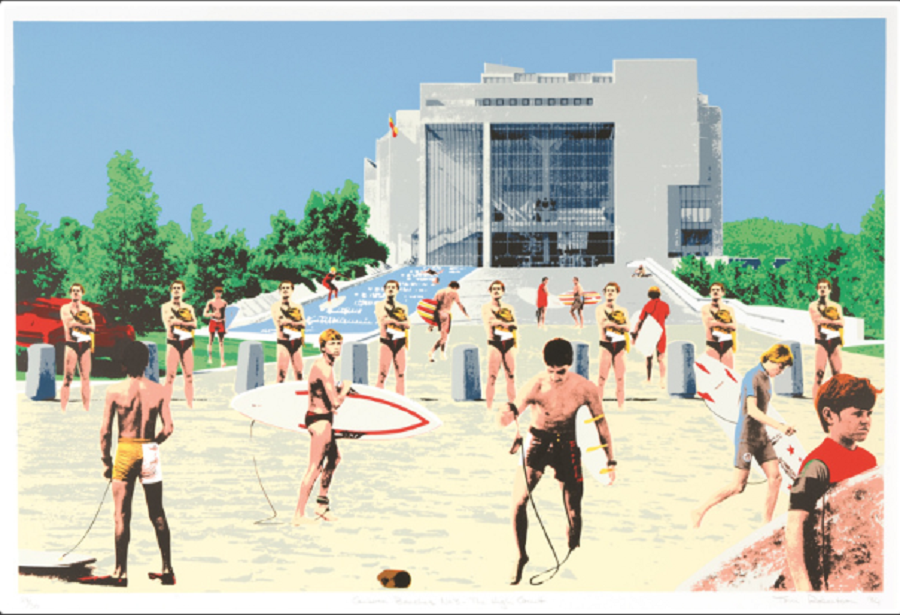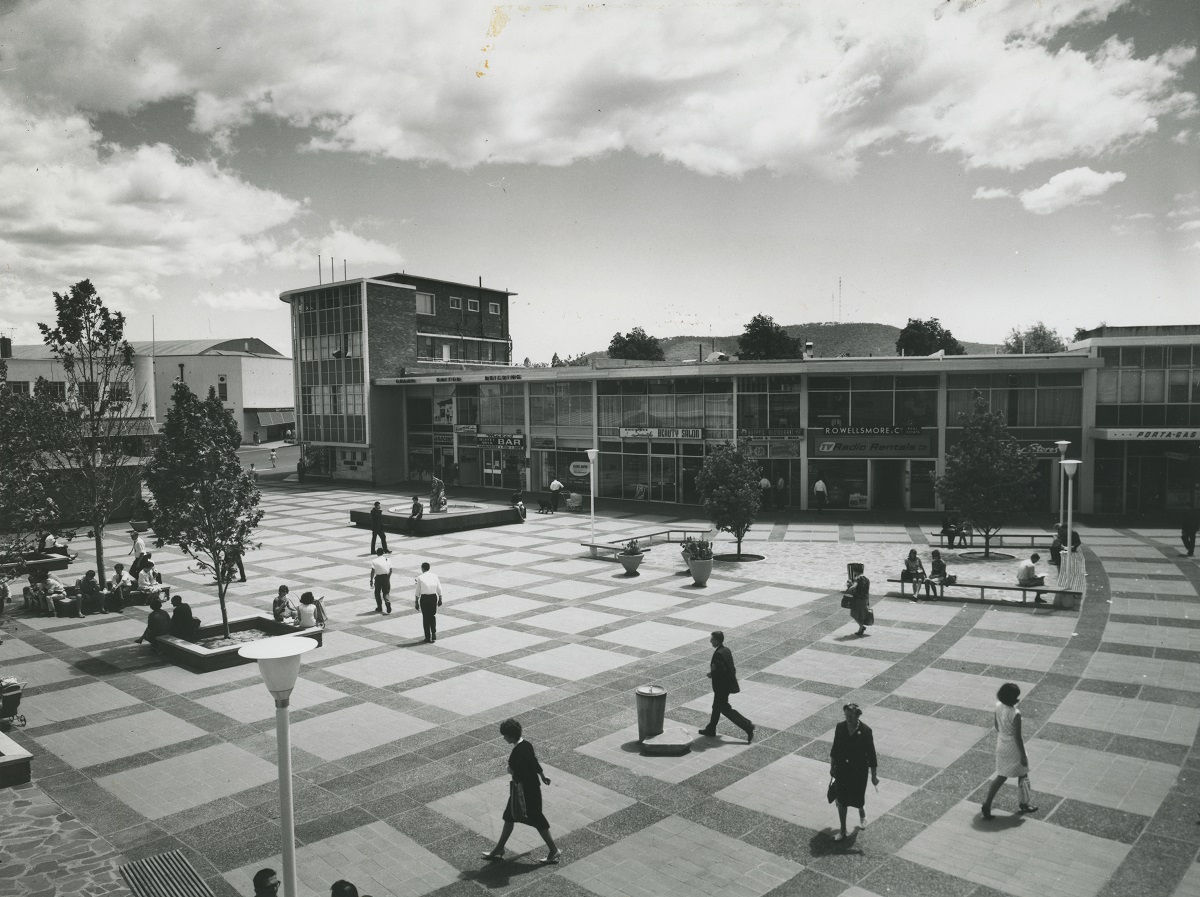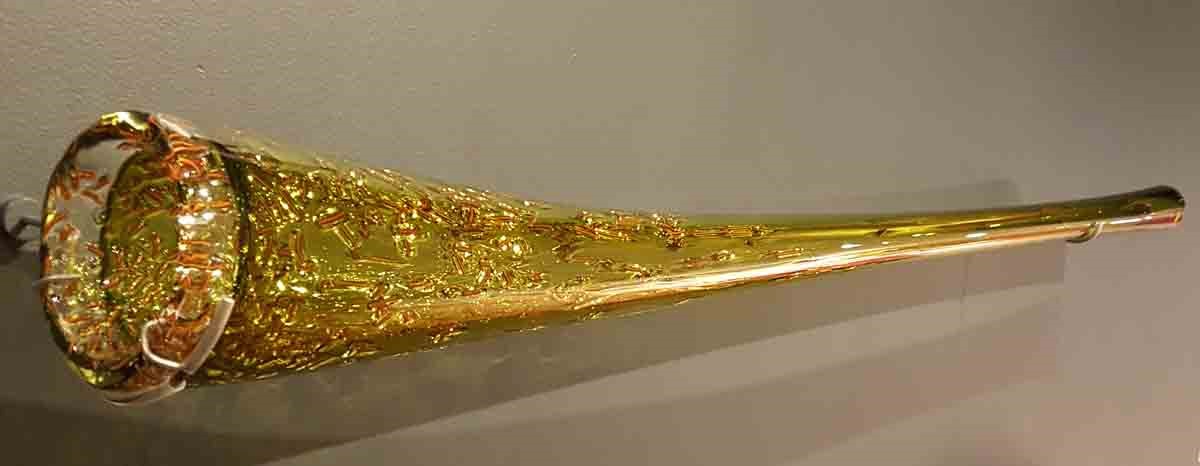
Exhibition / “Canberra/Place and People/Kamberri”, standing exhibition at the Canberra Museum and Gallery. Reviewed by CON BOEKEL.
THIS exhibition is a narrative history viewed through the prism of some of the people who made that history, through the prism of the curators’ narration and through 200 objects including solid objects and audio visuals.
The show reflects some modern curatorial trends by emphasising the lives of ordinary people, domestic settings and a focus on identity. These concerns are framed by significant dates, historical phases, and major events.
What to choose, what to omit, the availability of appropriate objects, and getting the balance right are always challenges. Further, narrative histories tend to present history as being settled.

Virginia Rigney and the CMAG team have curated a cracker of an exhibition, which won the 2023 Museum and Galleries National Award for best permanent exhibition. I heartily recommend a visit.
CMAG is part art gallery and part museum. It highly likely that this institutional synthesis has helped generate the most powerful single dynamic in the exhibition: exploiting the nexus between art, place and identity. I cannot praise this core feature of the exhibition too highly. Another strength is the way in which indigenous threads are woven throughout the exhibition.
Conversely, the museum’s lack of a natural history division also shows.
This brings us to the heart and soul of the exhibition, the 200 objects.

Some reflect Canberra’s every when: Matilda House’s possum skin cloak.
Some help inform a particular historical phase: a theodolite used to survey Canberra preparatory to its formation as the national capital.
Some reflect a particular event and are compelling beyond words: the charred dishwasher, loaded and ready for a cycle, frozen forever on Black Saturday, 2003.
Others reflect major contemporary issues: Melita Dahl’s print, “Happy (0.96) 20” in which a young woman distorts her face to try to subvert facial recognition technology.
Finally, the acme of the objects: the Paul House-Tom Rowney glass yidaki. It is beautiful. It is functional. It fuses technologies. It embodies deep tradition, contemporary adaptation and working together.
But is the exhibition too comfortable?

Where are the rough sleepers, the street beggars or the Canberrans struggling to pay their rent? Where are the Canberrans who attend soup kitchens and foodbank outlets? Where are our prisoners? Where is the struggle between capital and labour as epitomised by the gig delivery cyclists who daily risk their lives?
There is little sense of the Canberrans who do our core business of providing national services. Where are the people who tot up the national budget, formulate policy, prepare regulatory instruments, manage programs or service parliament.
Reflecting a major contemporary challenge for museum collection policies, where are the digital objects such as the algorithms, which inform the rise and rise of the digital economy that now so heavily shapes our lives and our identities?
Who can be trusted?
In a world of spin and confusion, there’s never been a more important time to support independent journalism in Canberra.
If you trust our work online and want to enforce the power of independent voices, I invite you to make a small contribution.
Every dollar of support is invested back into our journalism to help keep citynews.com.au strong and free.
Thank you,
Ian Meikle, editor




![For graphic designer Tracy Hall, street art is like any artwork, her canvas has been swapped out for fences and plywood, her medium changing from watercolours to spray paint.
A Canberra resident for 13 years, Tracy has been a street and mural artist for the past five.
Her first exploration into grand-scale painting was at the Point Hut toilets in Banks five years ago. “They had just finished doing up the playground area for all the little kids and the words [of graffiti] that were coming up weren’t family friendly,” she says.
“So I ended up drawing this design and I got approval for the artwork.”
Many of Tracy’s time-consuming artworks are free, with thousands of her own dollars put into paint.
@traceofcolourdesigns
To read all about Tracy's fabulous street art, visit our website at citynews.com.au or tap the link in our bio! 🎨🖌
#canberranews #citynews #localstories #canberrastories #Citynews #localnews #canberra #incrediblewomen #journalism #canberracitynews #storiesthatmatter #canberralocals #artist #streetart #streetartist #StreetArtMagic](https://scontent.cdninstagram.com/v/t39.30808-6/490887207_1225841146218103_6160376948971514278_n.jpg?stp=dst-jpg_e35_tt6&_nc_cat=106&ccb=1-7&_nc_sid=18de74&_nc_ohc=MUiEmedc4VAQ7kNvwHTUMX_&_nc_oc=Adk-5HjcsfQwB-n_l8zetmr0YqMaupGjrl2gNVCZdsmkxwn-oqjBg_V7pLtGggCE43s&_nc_zt=23&_nc_ht=scontent.cdninstagram.com&edm=ANo9K5cEAAAA&_nc_gid=2FoQKyFoWbYM5XXwvYdzOA&oh=00_AfFQmGRsiiKvgaBl5i0R0URNuuhMLm_F4ObJ6vYgAB4vKg&oe=680A3A94)



Leave a Reply